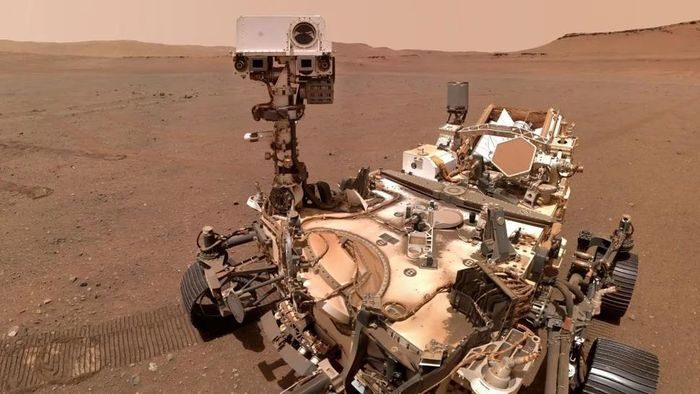In a groundbreaking experiment, NASA’s Perseverance rover has successfully produced enough oxygen on Mars to sustain an astronaut for three hours.
This exploration vehicle first touched down on Mars in February 2021 and has been creating oxygen using the Mars Oxygen In-Situ Resource Utilization Experiment (MOXIE), which generates oxygen by converting carbon dioxide periodically over the span of two years.

A selfie taken by NASA’s Perseverance Rover on Mars. (Image: NASA)
According to NASA, since arriving on Mars, the device, which is the size of a microwave, has produced 122 grams of oxygen. This amount is equivalent to what a small dog would breathe in over 10 hours, providing scientists with hope that human life can one day be sustained on this harsh planet.
Trudy Kortes, director of technology at NASA’s Space Technology Mission Directorate (STMD) in Washington, stated: “We are proud to support a breakthrough technology like MOXIE that can convert in-situ resources into useful products for future exploration missions. By demonstrating this technology in real conditions, we are one step closer to a future where astronauts can live on Mars.”
NASA explains that carbon dioxide is abundant on Mars, making up about 95% of its thin atmosphere. By processing a small amount of carbon dioxide during 16 experiments, the MOXIE device separated oxygen atoms from CO2 and analyzed their purity before safely isolating them. The leftover material was then released as carbon monoxide.
Scientists indicate that these oxygen-extraction devices will not only be beneficial for the breathing needs of future settlers but also for producing rocket fuel.
Pamela Melroy, NASA’s deputy administrator, remarked: “MOXIE’s impressive performance demonstrates that extracting oxygen from the Martian atmosphere is feasible – oxygen could help provide breathable air or rocket propellant for future astronauts. Developing technologies that allow us to utilize resources on the Moon and Mars is crucial for establishing a long-term presence on the Moon, creating a robust lunar economy, and enabling us to support initial human exploration campaigns to Mars.”
However, the prospect of humans living on Mars remains a daunting challenge. Mars is so cold that average temperatures hover around -62 degrees Celsius, which would cause humans to freeze without a spacesuit, while its low atmospheric pressure could cause their blood to boil. This is not to mention the harmful radiation exposure due to the lack of a protective ozone layer and the severe loss of bone density.
As a vital part of NASA’s $2.7 billion Mars 2020 mission, the rover, alongside the Curiosity rover, is searching for signs of ancient life on the Martian surface by collecting dozens of rock samples that will eventually return to Earth. The Perseverance rover is accompanied by the Ingenuity helicopter, which has conducted 57 flights on the surface of Mars so far.


















































